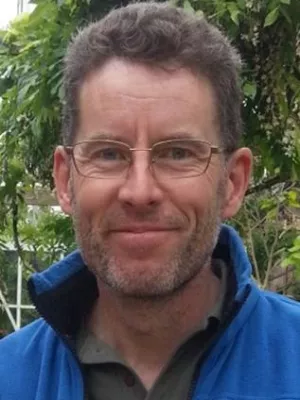
Dan Hammarlund
Professor

Lake ecosystem responses to catchment disturbance and airborne pollution: an 800-year perspective in southern Sweden
Författare
Summary, in English
Sediment sequences spanning the last 800 years from two small lakes in the south Swedish uplands were explored for assessment of effects of changing human population, local land-use practices and airborne pollution on lake-ecosystem functioning and resilience. Variations in nutrient cycling and deposition of lithogenic elements were studied, using a multi-proxy stratigraphic approach. Carbon and nitrogen elemental and isotopic analyses were applied in combination with records of hydrocarbons (n-alkanes) to investigate the sources and depositional conditions of sediment organic matter. Changes in fluvial and airborne delivery of inorganic matter were based on X-ray fluorescence measurements. The results reveal that population growth and related increases in land-use pressure had a major impact on catchment erosion and input of terrestrial organic matter to the lakes from the 1500s to the end of the 1800s. Evidence also exists of a brief period of catchment disturbance at ca. 1200-1300, followed by recovery, likely connected to the Black Death pandemic. At ca. 1900 synchronous shifts in most of the proxy records suggest a marked change in external forcing common to the two lakes related to a major decrease in population density and the introduction of modern forestry following the industrial revolution. Interestingly, the two sediment records exhibit generally coherent trends in C/N ratio, organic C content and delta C-13, both before and after 1900, indicating broadly similar sensitivities of the lake ecosystems to human impact. In contrast, deviating trends in total N content, delta N-15 and lithogenic element concentrations (K, Ti, Rb and Zr) reflect site-specific responses to local disturbances during the last century due to different nutrient conditions and catchment properties. Our companion sediment records highlight the importance of understanding long-term human impact on watersheds and demonstrate how regional versus local forcing of lake ecosystems, as well as site-specific responses related to catchment characteristics can be reconstructed.
Avdelning/ar
- Kvartärgeologi
- MERGE: ModElling the Regional and Global Earth system
- BECC: Biodiversity and Ecosystem services in a Changing Climate
Publiceringsår
2013
Språk
Engelska
Sidor
545-560
Publikation/Tidskrift/Serie
Journal of Paleolimnology
Volym
50
Issue
4
Dokumenttyp
Artikel i tidskrift
Förlag
Springer
Ämne
- Geology
Nyckelord
- Land-use change
- Human impact
- Lake sediments
- Stable isotopes
- Inorganic elements
- Hydrocarbons
Status
Published
ISBN/ISSN/Övrigt
- ISSN: 0921-2728

